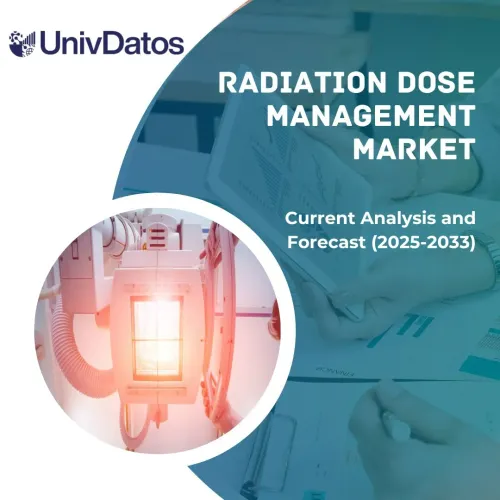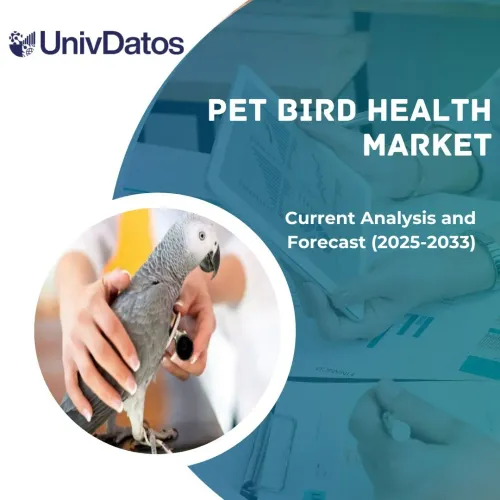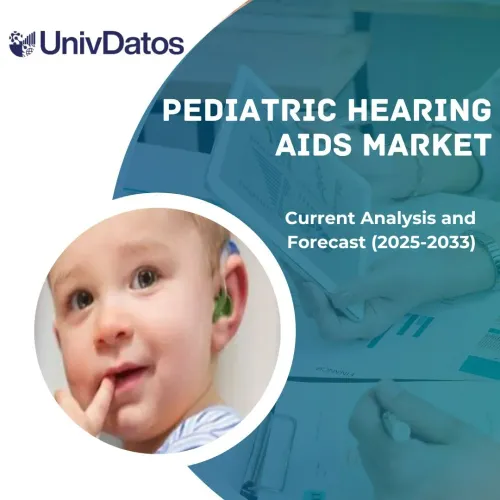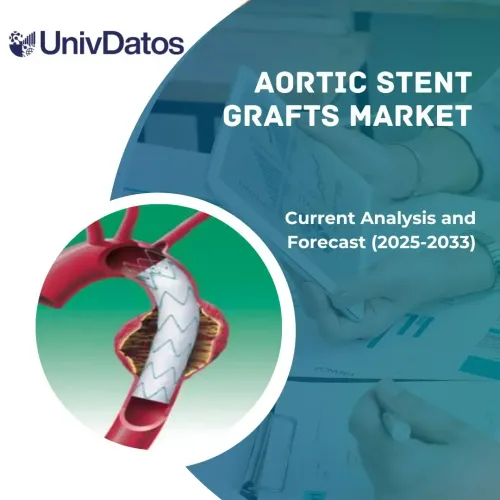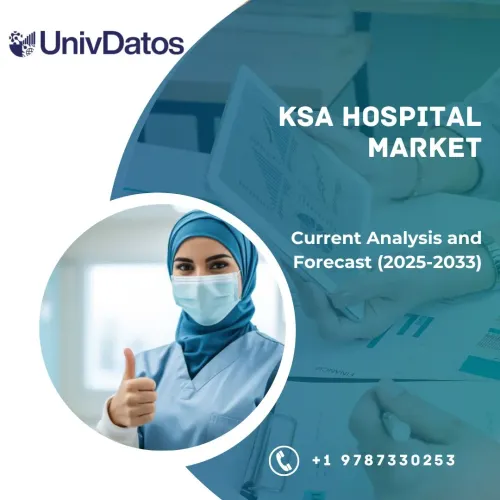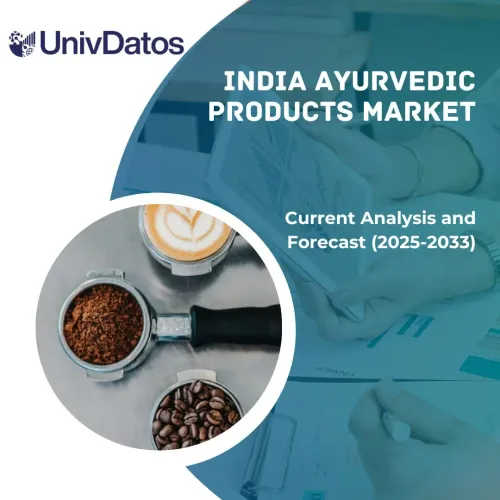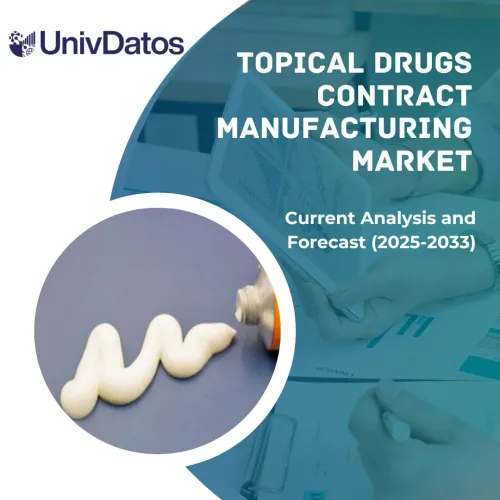- Startseite
- Über uns
- Industrie
- Dienstleistungen
- Lesen
- Kontaktieren Sie uns
Markt für Antiproliferativa: Aktuelle Analyse und Prognose (2022-2028)
Betonung auf Arzneimitteltyp (Immunsuppressiva, alkylierende Substanzen, Nitrosourea und andere); Darreichungsform (Tablette, Kapseln, Injektionen und andere) Verabreichungsweg (intravenös, oral und andere) Indikation (Autoimmunerkrankungen, Krebs, Organtransplantation, nicht-entzündliche Erkrankungen und andere) und Endverbraucher (Krankenhäuser und Apotheken) und Region/Land
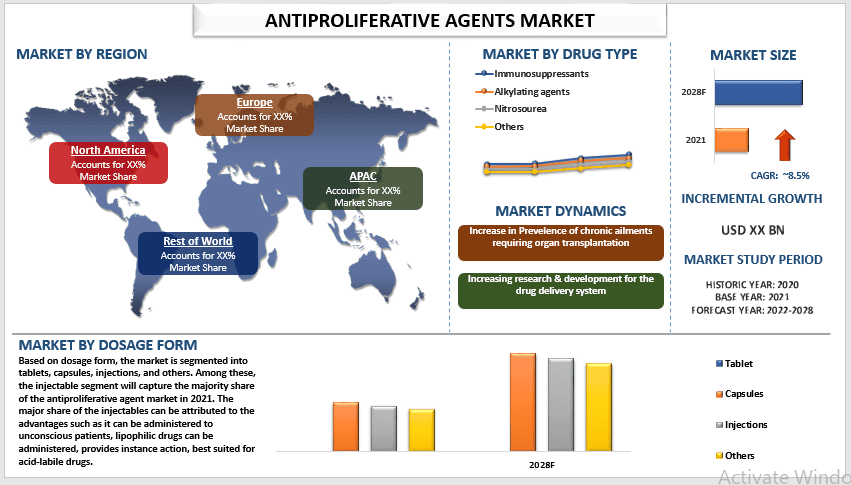
Es wird erwartet, dass der Markt für Antiproliferativa im Prognosezeitraum (2022-2028) mit einer starken CAGR von ~ 8,5 % wächst.Antiproliferativ ist ein Prozess, der das Zellwachstum, insbesondere das Wachstum maligner Zellen in das umgebende Gewebe, unterdrücken soll. Die steigende Nachfrage nach Organtransplantationen weltweit. Darüber hinaus treiben staatliche Initiativen und die Zunahme der alternden Bevölkerung den Markt an. Darüber hinaus treibt der Anstieg der Prävalenz chronischer Krankheiten in Verbindung mit einer Zunahme der Prävalenz von Autoimmunerkrankungen den Markt für Antiproliferativa an.So waren beispielsweise im Jahr 2023 laut der National Stem Cells Foundation fast 4 % der Welt von 1 oder 80 verschiedenen Autoimmunerkrankungen betroffen, zu denen Multiple Sklerose, rheumatoide Arthritis, Lupus, Morbus Crohn, Psoriasis und Sklerodermie gehören.
Einige der wichtigsten Akteure auf dem Markt sind Accord Healthcare, F. Hoffmann-La Roche Ltd, Novartis Pharmaceuticals, Glenmark Pharmaceuticals U.S. Inc., GlaxoSmithKline, Johnson & Johnson Services, Inc., Cedilla Pharmaceuticals., AstraZeneca LP, Lupin., Cipla Inc.
In der Studie präsentierte Erkenntnisse
“Unter den Arzneimitteltypen hielt das Immunsuppressiva-Segment im Jahr 2021 einen dominierenden Marktanteil”
Nach Arzneimitteltyp ist der Markt in Immunsuppressiva, alkylierende Substanzen, Nitrosourea und andere unterteilt. Davon dominierte das Immunsuppressiva-Segment im Jahr 2021 den Markt. Dies ist auf die zunehmende Prävalenz von Autoimmunerkrankungen und die steigenden Verfahren der Organtransplantation weltweit zurückzuführen. So wurden beispielsweise im Jahr 2021 laut dem Bericht des Organ Procurement and Transplantation Network (OPTN) 41.357 Organtransplantationsoperationen in den USA durchgeführt. Dies entsprach einem Anstieg von 5,9 % gegenüber 2020.
“Unter den Darreichungsformen hielt das Injektionssegment im Jahr 2021 den größten Marktanteil”
Nach Darreichungsform ist der Markt in Tabletten, Kapseln, Injektionen und andere unterteilt. Davon wird das Injektionssegment im Jahr 2021 den größten Anteil am Markt für Antiproliferativa einnehmen. Der Mehrheitsanteil der Injektionen ist auf die Vorteile zurückzuführen, die sie bietet, wie z. B. maximale Bioverfügbarkeit bei raschem Transport des Arzneimittels, da es den First-Pass-Metabolismus umgeht. Daher gilt es als einer der effektivsten Verabreichungswege. Darüber hinaus ist die Injektion während eines chirurgischen Eingriffs, wie z. B. einer Organtransplantation, bei der sofortiges Handeln erforderlich ist und sich der Patient in einem komatösen Zustand befindet, die bevorzugte Darreichungsform der Ärzte.
“Unter den Verabreichungswegen hielt das orale Segment im Jahr 2021 den größten Marktanteil”
Nach Verabreichungsweg ist der Markt in oral, intravenös und andere unterteilt. Davon wird das orale Segment im Jahr 2021 den größten Anteil am Markt für Antiproliferativa einnehmen. Der Mehrheitsanteil des oralen Weges ist auf die Präferenz der Patienten zurückzuführen, da dieser Verabreichungsweg nicht-invasiv und patientenfreundlich ist und einen bequemen Verabreichungsweg darstellt. Darüber hinaus ist in Fällen chronischer Erkrankungen wie hormonelle Störungen und Autoimmunerkrankungen, bei denen nur selten Operationen durchgeführt werden, die feste orale Darreichungsform die bevorzugte Darreichungsform zur Behandlung der Erkrankung durch Ärzte. Darüber hinaus ist nach dem postoperativen chirurgischen Eingriff, bei dem eine Erhaltungstherapie erforderlich ist, die oral verabreichte Darreichungsform das bevorzugte Medikament der Ärzte.
“Unter den Indikationen hielt das Krebssegment im Jahr 2021 den größten Marktanteil”
Basierend auf der Indikation ist der Markt in Autoimmunerkrankungen, Krebs, Organtransplantation, nicht-entzündliche Erkrankungen und andere unterteilt. Davon würde das Krebssegment im Prognosezeitraum den dominierenden Anteil halten. So würde beispielsweise laut der Internationalen Agentur für Krebsforschung (IARC) der Weltgesundheitsorganisation (WHO) die Prävalenz von Krebsfällen von 19,3 Mio. im Jahr 2020 auf 24,6 Mio. im Jahr 2030 ansteigen. Darüber hinaus sind laut der oben genannten Quelle zunehmende Fettleibigkeit aufgrund eines sitzenden Lebensstils, des Konsums von verarbeiteten Lebensmitteln und zuckerhaltigen Getränken sowie ein erhöhter Alkoholkonsum die Hauptfaktoren für den Anstieg der Krebsprävalenz weltweit.
“Unter den Endverbrauchern hielt das Krankenhaussegment im Jahr 2021 den größten Marktanteil”
Nach Endverbrauchern ist der Markt in Krankenhäuser, Apotheken und andere unterteilt. Davon hält das Krankenhausapothekensegment im Prognosezeitraum den größten Anteil. Dies ist auf die Präferenz der Patienten zurückzuführen, Medikamente von Krankenhäusern anstelle von Apotheken außerhalb des Krankenhauses zu kaufen. Darüber hinaus ist die Krankenhausapotheke eine zuverlässige und sichere Quelle für den Medikamentenkauf, da sie den Kauf von falsch gekennzeichneten Medikamenten aus nicht zuverlässigen Quellen vermeidet. Darüber hinaus ist für stationäre Patienten der Kauf von Medikamenten in der Krankenhausapotheke leichter zugänglich als in Einzelhandelsgeschäften.
“Nordamerika dominierte im Jahr 2021 den Markt für Antiproliferativa”
Nordamerika dominierte im Jahr 2021 den Markt für Antiproliferativa, was auf die steigenden Gesundheitsausgaben und das Vorhandensein einer gut etablierten Gesundheitsinfrastruktur zurückzuführen ist, die das Wachstum des gesamten regionalen Marktes befeuern. So gab es beispielsweise laut dem Bericht der United States Food Drug Administration (USFDA) von 2021 4.944 von der FDA registrierte Einrichtungen für die Entwicklung von Biologika und 6.799 für Humanarzneimittel. Daher wird der Anstieg der Gesundheitsausgaben in Verbindung mit dem Vorhandensein einer gut etablierten Gesundheitsinfrastruktur das Wachstum des Marktes in dieser Region steigern.
Marktbericht über Antiproliferativa

Gründe für den Kauf dieses Berichts:
- Die Studie umfasst eine Marktgrößen- und Prognoseanalyse, die von authentifizierten Branchenexperten validiert wurde.
- Der Bericht gibt einen schnellen Überblick über die Gesamtleistung der Branche auf einen Blick.
- Der Bericht enthält eine eingehende Analyse prominenter Branchenakteure mit einem Schwerpunkt auf wichtigen Finanzkennzahlen, Produktportfolios, Expansionsstrategien und aktuellen Entwicklungen.
- Detaillierte Untersuchung der Treiber, Einschränkungen, wichtigsten Trends und Chancen in der Branche.
- Die Studie deckt den Markt umfassend über verschiedene Segmente ab.
- Detaillierte Analyse der Branche auf regionaler Ebene.
Optionen zur Anpassung:
Der globale Markt für Antiproliferativa kann nach Bedarf oder nach jedem anderen Marktsegment weiter angepasst werden. Darüber hinaus versteht UMI, dass Sie möglicherweise Ihre eigenen Geschäftsanforderungen haben, daher können Sie sich gerne mit uns in Verbindung setzen, um einen Bericht zu erhalten, der Ihren Anforderungen vollständig entspricht.
Inhaltsverzeichnis
Forschungsmethodik für die Marktanalyse von Antiproliferativa (2022-2028)
Die Analyse des historischen Marktes, die Schätzung des aktuellen Marktes und die Prognose des zukünftigen Marktes des globalen Marktes für Antiproliferativa waren die drei Hauptschritte zur Erstellung und Analyse der Akzeptanz von Antiproliferativa in wichtigen Regionen weltweit. Es wurden umfassende Sekundärrecherchen durchgeführt, um die historischen Marktzahlen zu sammeln und die aktuelle Marktgröße zu schätzen. Zweitens wurden zur Validierung dieser Erkenntnisse zahlreiche Ergebnisse und Annahmen berücksichtigt. Darüber hinaus wurden umfassende Primärinterviews mit Branchenexperten entlang der Wertschöpfungskette des globalen Marktes für Antiproliferativa geführt. Nach Annahme und Validierung der Marktzahlen durch Primärinterviews haben wir einen Top-Down-/Bottom-Up-Ansatz verwendet, um die gesamte Marktgröße zu prognostizieren. Danach wurden Marktsegmentierungs- und Datentriangulationsmethoden angewendet, um die Marktgröße der Segmente und Untersegmente der Branche zu schätzen und zu analysieren. Die detaillierte Methodik wird im Folgenden erläutert:
Analyse der historischen Marktgröße
Schritt 1: Eingehende Untersuchung von Sekundärquellen:
Es wurde eine detaillierte Sekundärstudie durchgeführt, um die historische Marktgröße des Marktes für Antiproliferativa über unternehmensinterne Quellen wieJahresberichte und Finanzberichte, Präsentationen zur Leistung, Pressemitteilungen usw.und externe Quellen einschließlichZeitschriften, Nachrichten & Artikel, Regierungsveröffentlichungen, Wettbewerberveröffentlichungen, Branchenberichte, Datenbanken von Drittanbietern und andere glaubwürdige Veröffentlichungen.
Schritt 2: Marktsegmentierung:
Nachdem wir die historische Marktgröße des Marktes für Antiproliferativa erhalten hatten, führten wir eine detaillierte Sekundäranalyse durch, um historische Markteinblicke und -anteile für verschiedene Segmente und Untersegmente für wichtige Regionen zu sammeln. Zu den wichtigsten Segmenten, die in dem Bericht enthalten sind, gehören Arzneimitteltyp, Darreichungsform, Indikation, Verabreichungsweg und Endverbraucher. Darüber hinaus wurden länderspezifische Analysen durchgeführt, um die allgemeine Akzeptanz von Testmodellen in dieser Region zu evaluieren.
Schritt 3: Faktorenanalyse:
Nachdem wir die historische Marktgröße verschiedener Segmente und Untersegmente ermittelt hatten, führten wir eine detaillierteFaktorenanalysedurch, um die aktuelle Marktgröße des Marktes für Antiproliferativa zu schätzen. Darüber hinaus führten wir eine Faktorenanalyse unter Verwendung abhängiger und unabhängiger Variablen wie Arzneimitteltyp, Darreichungsform, Indikation, Verabreichungsweg und Endverbraucher des Marktes für Antiproliferativa durch. Es wurde eine gründliche Analyse für Angebots- und Nachfrageszenarien unter Berücksichtigung der wichtigsten Partnerschaften, Fusionen und Übernahmen, Geschäftserweiterungen und Produkteinführungen im Marktsektor für Antiproliferativa weltweit durchgeführt.
Schätzung und Prognose der aktuellen Marktgröße
Ermittlung der aktuellen Marktgröße:Basierend auf umsetzbaren Erkenntnissen aus den obigen 3 Schritten kamen wir zur aktuellen Marktgröße, zu den wichtigsten Akteuren auf dem globalen Markt für Antiproliferativa und zu den Marktanteilen der Segmente. Alle erforderlichen prozentualen Anteile und Marktaufschlüsselungen wurden unter Verwendung des oben genannten Sekundäransatzes ermittelt und durch Primärinterviews verifiziert.
Schätzung & Prognose:Für die Marktschätzung und -prognose wurden verschiedene Faktoren, darunter Treiber & Trends, Einschränkungen und Chancen für die Stakeholder, gewichtet. Nach der Analyse dieser Faktoren wurden relevante Prognosetechniken, d. h. der Top-Down-/Bottom-Up-Ansatz, angewendet, um die Marktprognose für 2028 für verschiedene Segmente und Untersegmente in den wichtigsten globalen Märkten zu erstellen. Die zur Schätzung der Marktgröße angewandte Forschungsmethodik umfasst:
- Die Marktgröße der Branche, gemessen am Umsatz (USD) und die Adoptionsrate des Marktes für Antiproliferationsmittel in den wichtigsten Märkten im Inland
- Alle prozentualen Anteile, Aufteilungen und Aufschlüsselungen von Marktsegmenten und Untersegmenten
- Hauptakteure auf dem globalen Markt für Antiproliferationsmittel in Bezug auf die angebotenen Produkte. Außerdem die Wachstumsstrategien, die diese Akteure anwenden, um in dem schnell wachsenden Markt zu konkurrieren
Validierung von Marktgröße und -anteil
Primärforschung:Tiefgehende Interviews wurden mit den Key Opinion Leaders (KOLs), einschließlich Führungskräften der obersten Ebene (CXO/VPs, Vertriebsleiter, Marketingleiter, Betriebsleiter, Regionalleiter, Länderleiter usw.) in den wichtigsten Regionen, durchgeführt. Die Ergebnisse der Primärforschung wurden dann zusammengefasst und eine statistische Analyse durchgeführt, um die aufgestellte Hypothese zu belegen. Die Ergebnisse der Primärforschung wurden mit den Ergebnissen der Sekundärforschung konsolidiert, wodurch Informationen in umsetzbare Erkenntnisse umgewandelt wurden.
Aufteilung der Primärteilnehmer in verschiedenen Regionen
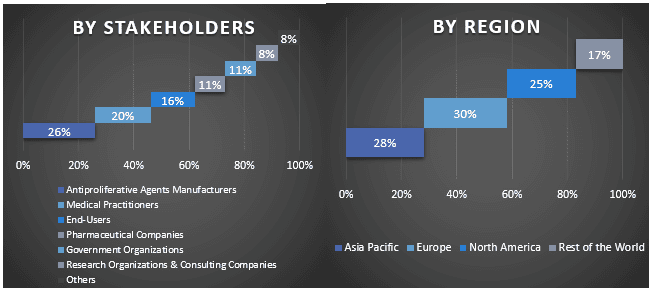
Markt-Engineering
Die Daten-Triangulationstechnik wurde eingesetzt, um die gesamte Marktschätzung abzuschließen und präzise statistische Zahlen für jedes Segment und Untersegment des globalen Marktes für Antiproliferationsmittel zu erhalten. Die Daten wurden nach der Untersuchung verschiedener Parameter und Trends in den Bereichen Arzneimitteltyp, Darreichungsform, Indikation, Verabreichungsweg und Endverbraucher auf dem globalen Markt für Antiproliferationsmittel in mehrere Segmente und Untersegmente aufgeteilt.
Das Hauptziel der globalen Marktstudie für Antiproliferationsmittel
Die aktuellen und zukünftigen Markttrends des globalen Marktes für Antiproliferationsmittel wurden in der Studie aufgezeigt. Investoren können strategische Einblicke gewinnen, um ihre Investitionsentscheidungen auf der Grundlage der in der Studie durchgeführten qualitativen und quantitativen Analysen zu treffen. Aktuelle und zukünftige Markttrends bestimmten die Gesamtattraktivität des Marktes auf regionaler Ebene und boten den Branchenteilnehmern eine Plattform, um den unerschlossenen Markt auszunutzen und von einem First-Mover-Vorteil zu profitieren. Weitere quantitative Ziele der Studien umfassen:
- Analyse der aktuellen und prognostizierten Marktgröße des Marktes für Antiproliferationsmittel in Bezug auf den Wert (USD). Außerdem Analyse der aktuellen und prognostizierten Marktgröße verschiedener Segmente und Untersegmente
- Zu den Segmenten der Studie gehören Bereiche des Arzneimitteltyps, der Darreichungsform, des Verabreichungswegs, der Indikation und der Endverbraucher. Definition und Analyse des regulatorischen Rahmens für die Antiproliferationsmittel-Industrie
- Analyse der Wertschöpfungskette mit dem Vorhandensein verschiedener Intermediäre sowie Analyse des Kunden- und Wettbewerbsverhaltens der Branche
- Analyse der aktuellen und prognostizierten Marktgröße des Marktes für Antiproliferationsmittel für die Hauptregion
- Zu den wichtigsten Ländern der in dem Bericht untersuchten Regionen gehören Asien-Pazifik, Europa, Nordamerika und der Rest der Welt
- Unternehmensprofile des Marktes für Antiproliferationsmittel und die Wachstumsstrategien, die von den Marktteilnehmern angewendet werden, um sich in dem schnell wachsenden Markt zu behaupten
- Detaillierte Analyse der Branche auf regionaler Ebene
Verwandt Berichte
Kunden, die diesen Artikel gekauft haben, kauften auch


